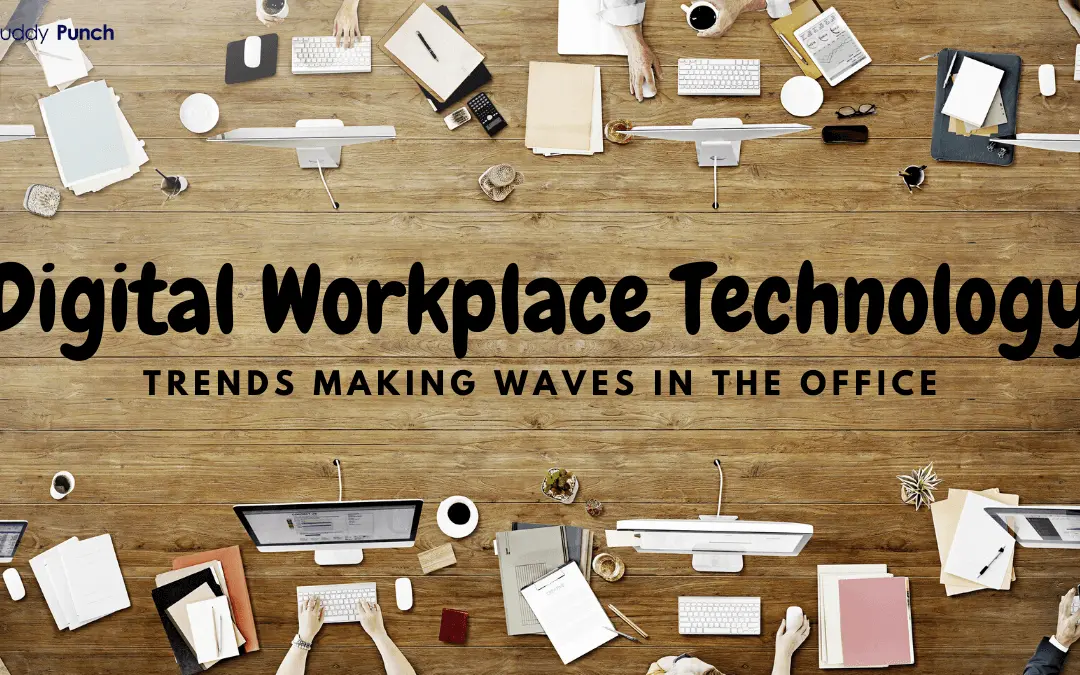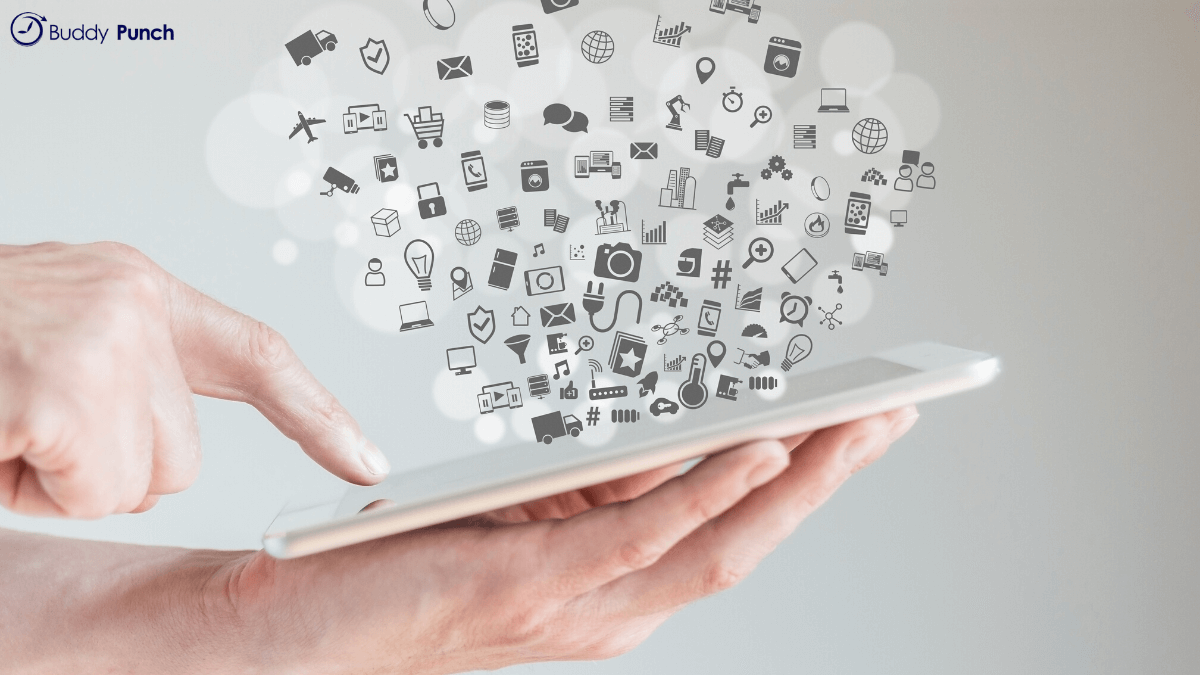Digital Workplace Technology: Trends Making Waves In The Office

Does your office look different than it did only a few years ago? Do you have a storage room stacked full of filing cabinets and computer equipment? Is the majority of your workspace taken over by a monitor and a computer tower? Do you even have to go into a physical office or work? Let’s face it; the digital workplace looks drastically different.
There are some trends taking hold in the modern digital workplace. Some of these trends we have been waiting patiently for, and others have surprised us. One thing is for sure; technology is going to continue making waves in the workplace and changing work as we know it. Here are some of the trends that we’ve seen making their way into offices across the world.

Cloud computing and cloud-based solutions, such as scheduling software, allows you to access your data from any device with an internet connection. Not only does this make the modern office more accessible, but it makes it more secure.
Cloud, cloud, cloud
It’s all about the cloud. We talked about the cloud constantly because it is the underlying technology that is changing the most in business. It is more than just moving files and data to a cloud, which almost everyone is doing, but it is services too. Cloud-based services such as scheduling software or SaaS programs have drastically changed the office environment.
You may have never had an IT department, and if you did, you might not have the same in-house IT department service anymore due to the cloud. Chances are you are probably using more SaaS (software as a service) programs than you know. I would venture to guess that most people reading this article work for businesses that run their organizations in a cloud environment. Not only is it cost-effective, but it is also saving space and time. Companies are using consumption-based services to determine exactly how much space and cost their cloud is saving them.
The beauty of cloud-based software is the numerous amount of options available. You get to decide what works best for your business. The cloud is probably the number one factor in changes to modern digital workplaces.
Improved IT User Experience
Right now, the world is buzzing about new advancements in the customer experience department, but let’s not forget your employees. After all, they are your first customers and should be treated as such. You should focus on your employee user experience as much as you do on the customer experience.
If your employees aren’t able to use the technology, applications, or programs you are providing them with, you will likely see a considerable decrease in productivity. If you’re not allowing them to use the devices they need, they may use their own device and can create an unsecured IT environment. Rather than shying away from this, you should embrace it. Allow employees to use the devices and programs that they need. Just make sure you can put in place protocols to ensure your data remains secure.
By allowing employees to use the device they feel the most comfortable with, it enhances their experience of that device when performing work. If you add in the cloud, this can increase the user experience even further and improve productivity. It’s a win-win for all involved.

The workplace is becoming increasingly digital and mobile thanks to IoT. Businesses should be searching for technologies that would improve, not only their company but the user experience for customers and employees.
More IoT to Improve Workflow
How many IoT (Internet of Things) connected devices do you have in your office? These devices are changing the way that business is conducted in industries such as production and manufacturing. IoT devices also impact creative companies outside of these industries. Devices such as workflow triggers and smart sensors are making it super easy to streamline workflows, monitor information, and learn.
As an example, a smart sensor in your server room could keep an eye on the temperature of the room, alerting your maintenance team if anything goes wrong. Scheduling software can help you regulate your staffing and labor costs. Amazon has a feature that allows you to track your package on a map once it has been sent to the post office. Such a feature could be used by smaller e-commerce companies looking to improve their customer experience.
But, to take advantage of these new sensors, you would need to prepare your IT department for an influx of new technologies and change your internal processes to accommodate them.
Virtualized Desktop Environments
Virtual desktop infrastructure, or more commonly known as VDI, is shifting how we work in industries across the board. Have you ever brought your work home only to find that you can’t do it because you needed something from your work computer? A VDI Allows employees to see their work desktop from practically anywhere, allowing them to work anytime they like. As a society, we are becoming increasingly mobile, and a VDI enables work to be too.
For your IT team to be prepared for a VDI, they must realize there are several endpoints they will need to secure. Employees are using mobile phones and tablets that we’ll need to have the same amount of security as a desktop computer or laptop. If not, you run the risk of a data breach and security complications. Your IT department should have a clear plan about what devices to allow, what not to allow, and how success will be measured.
In the end, this is about mobility. The workplace of the future allows an employee to do anything they could in the office no matter where they are or when it is. That is the target for businesses transforming their workplaces.

Rather than using old, out-dated processes, it is time to upgrade your workplace by taking advantage of modern solutions such as scheduling software. Technology, such as scheduling software, allows you to take mundane repetitive tasks and turn them into automated processes.
Remove the Bureaucracy
It is time to get rid of excessively complicated administrative processes that slow down progression now that you have access to the technology to do so. This trend within the modern workplace is creating more action-oriented work processes and tasks that give employees more responsibility.
Bureaucratic processes don’t add any value to meet your bottom line and instead impact productivity and efficiency. So how can you make this happen? By taking extremely tedious and mundane and tasks and simplifying them by using technology such as platforms, apps come on workflow management and more.
Now is the time to embrace modern technology to remain competitive and improve your business as a whole. Also, don’t be afraid to combine these concepts, and look into upgrades or alternatives of digital technology you may have already embraced. As digital transformation takes hold, workplace trends will be at the forefront of a wave that will likely only gained momentum as the next-generation technologies, such as AI and Intelligent Automation, advance.